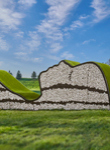Witherod viburnum is a large, upright-spreading, suckering shrub, native to North America. It tolerates both shady and wet sites, excellent for shrub borders, naturalizing, and woodland sites. It may be difficult to find in nurseries. A related species, possum-haw (Viburnum nudum), is listed in the cultivars section.
- Family (English) Elderberry
- Family (botanic) Adoxaceae
- Tree or plant type Shrub
- Foliage Deciduous (seasonally loses leaves)
- Native locale North America
- Size range Medium shrub (5-8 feet), Large shrub (more than 8 feet)
- Light exposure Full sun (6 hrs direct light daily), Partial sun / shade (4-6 hrs light daily)
- Hardiness zones Zone 3, Zone 4, Zone 5 (Northern Illinois), Zone 6 (City of Chicago), Zone 7, Zone 8
- Soil preference Acid soil, Moist, well-drained soil, Wet soil
- Tolerances Occasional flooding, Road salt, Wet sites
- Season of interest mid spring, late spring, early fall, mid fall
- Flower color and fragrance White
- Shape or form Arching, Multi-stemmed, Round
- Growth rate Moderate, Slow


























































































